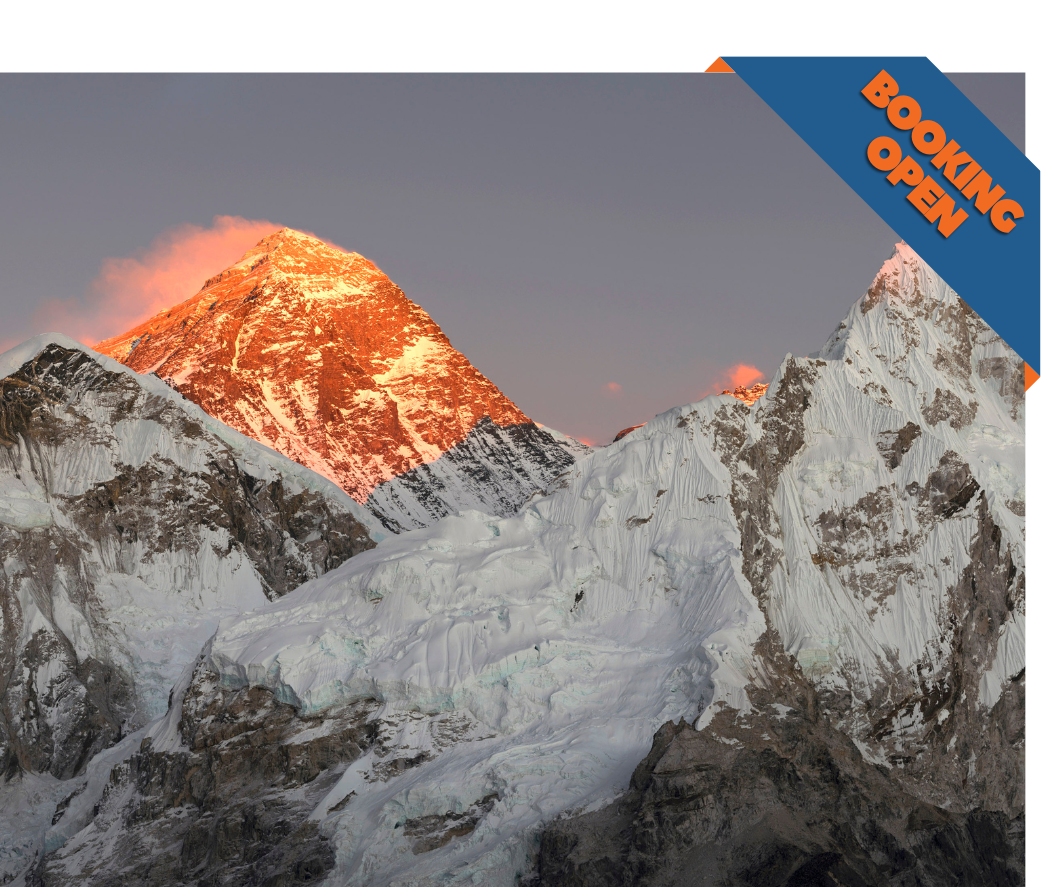Phase 1: Puja ceremony & Training
After we reach base camp, we will get a 1 or 2-day leisure day to acclimatize our body well. Our sherpa team will decide on our puja day on a very auspicious day according to the lunar calendar. The puja ceremony in other words is taking permission from nature to step on their body. The local ethnic group from the valley believes that all mountain has their own gods and goddesses, so we need to get permission before we step on. The Puja ceremony is performed by the monk from the nearby village, Phu-goun. Your guide will instruct you well on the day before the ceremony. The day will be full of relaxation, enjoyment, dancing, and singing.
After the day of the auspicious puja ceremony, your training session will start. One of our best climbing guides will lead a session that includes gear demonstration, walking on crampons, use of technical gear walking on fixed lines, etc. Our team of guides will instruct you about using all technical gear. The pre-basic training session will take place for one or two days in base camp.
After a great training of one or two days, Phase 1 of climbing is done, and you are ready to climb up further.
Phase 2: Acclimatization rotation on the Mountain.
We designed the best rotation that suits all levels of people who live at sea level, to acclimatize well on the mountain.
Rotation 1: Touch camp 2
Day 1st: Basecamp to camp I 5620 meters
We start our journey in midday after lunch. Our climbing guide will instruct you about the gears and clothing, what should pack in, and what not. Our support sherpa team will help you to carry tents, your sleeping bag, an insulated flame mattress, and some snacks. We expect you to carry a minimum of 15kg of weight.
Approx Elevation Gain: 770 meters (2950ft.)
Highest Elevation: 5620 meters/ 18438ft.
Approx. walking hours: 6-7hrs.
Overnight at VE25 tent or equivalent mountain tents.
All foods provided are high altitude ready-to-eat packet foods.
Day 2nd: Acclimatization hike towards camp 2.
The second-day walk is harder than the first day. We will hike towards camp 2 and try to reach camp 2 and will back to camp 1 again for the night.
Approx Elevation Gain: 370 meters (1214ft.)
Highest Elevation: 5990 meters (19652 feet).
Approx walking Hour: 7 hrs.
Overnight at VE25 tent or equivalent mountain tent.
All foods provided are high altitude ready-to-eat packet foods.
Day 3rd: back to base camp.
We will retrace the same way back to base camp today. We start our journey early in the morning.
With these five days of acclimatization rotation, we will complete our second phase of the expedition.
Phase 3: Summit rotation
After a hard workout, training, and some relaxation, finally the most awaited moments will come. Our guide team will decide our summit rotations based on favorable weather conditions, less traffic, completion of fixed line on the mountain, and other conditions. Normally the summit rotation will be like the following:
- Day 1: Basecamp to Camp I
- Day 2: Camp I to Camp II
- Day 3: Camp II to Camp III
Approx Elevation Gain: 330(1083ft.)
Highest Elevation: 6320 meters/ 20735ft.
Approx. walking hours: 2-3hrs.
Overnight at VE25 tent or equivalent mountain tents.
All foods provided are high altitude ready-to-eat packet foods. You will use supplemental oxygen from Camp 3.
Expected weight of your bag: 8 kg
Finally, the most awaited day will arrive. After reaching Camp IV in the evening, we will have some hours of rest and our summit push begins early morning. Summiting Himlung Himal at 7,126 meters will be an unforgettable experience, and the early morning climb will provide stunning views as you ascend. Following your climbing expert’s guidance will be essential, and their expertise will help ensure a safe and successful summit. Standing at the top will be an exhilarating moment of pride, and it’s a testament to all the hard work and preparation you’ve put in. The descent back to Camp II will feel especially rewarding, knowing you’ve reached the summit.
Approx Elevation Gain: 806m (2644ft.)
Highest Elevation: 7126m (23380ft.)
Approx. walking hours: 7hrs. climbing up and 4 hrs. down.
Overnight at VE25 tent or equivalent mountain tents.
All foods provided are high altitude ready-to-eat packet foods.
*Depending on the weather conditions and your body condition we will decide about either starting our summit push from C-II or using C-III. Most of the climbers don’t want to spend more nights on the mountain so they start their summit push from C-II instead of C-III. Be prepared and flexible about this plan.
· Day 7: Back to Basecamp.
Note: Our guide will decide at base camp about the date of the summit and rotations, The itinerary can be changed depending on your physical condition, speeds, times, and other factors.








